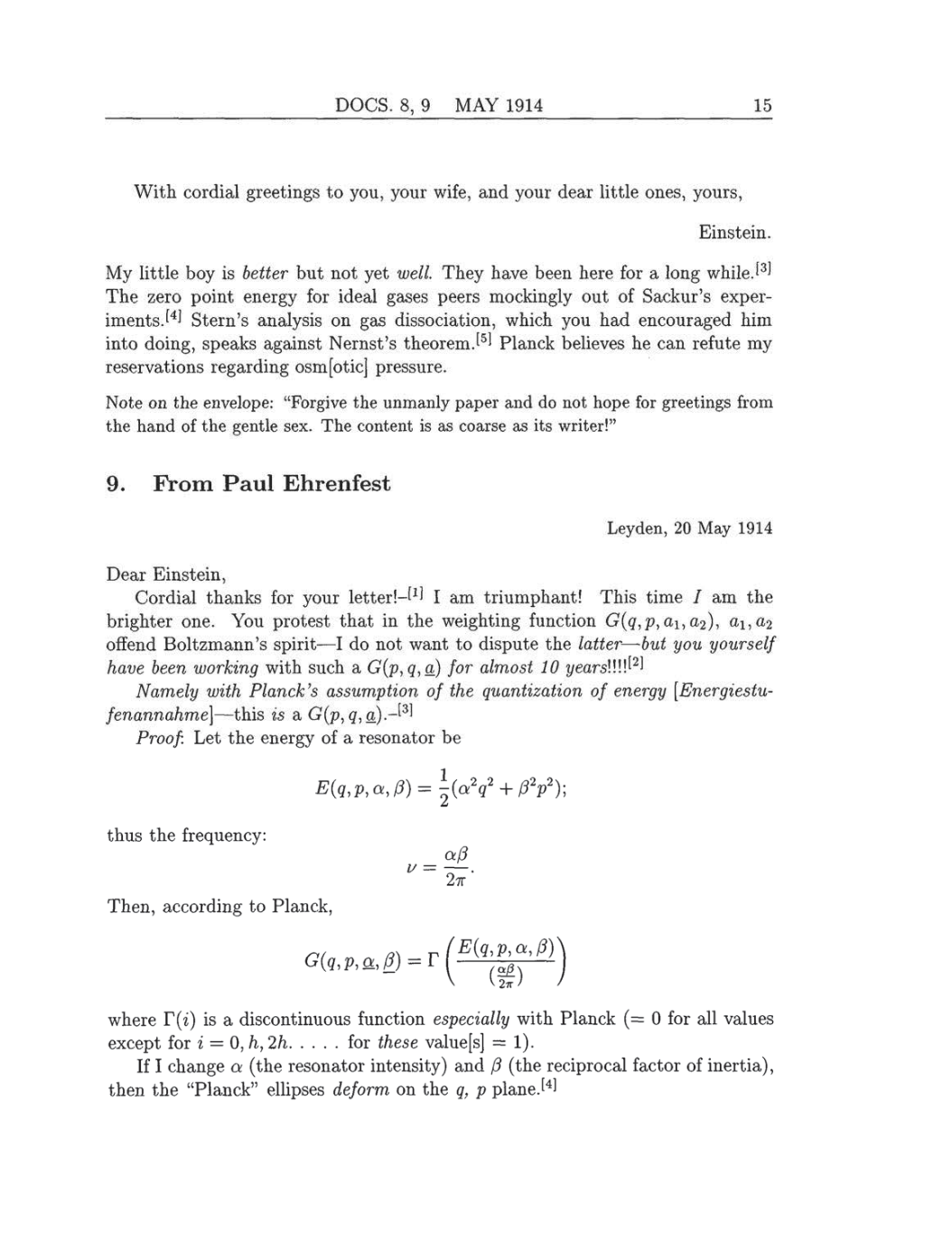DOCS.
8,
9
MAY 1914
15
With
cordial
greetings
to
you, your wife,
and
your
dear
little
ones,
yours,
Einstein.
My
little
boy
is
better
but
not
yet
well.
They
have been here for
a
long
while.[3]
The
zero
point
energy
for ideal
gases peers mockingly
out of Sackur’s
exper-
iments.[4]
Stern’s
analysis
on
gas dissociation,
which
you
had
encouraged
him
into
doing,
speaks
against
Nernst's theorem.[5] Planck believes he
can
refute
my
reservations
regarding
osm[otic]
pressure.
Note
on
the
envelope: "Forgive
the
unmanly
paper
and
do not
hope
for
greetings
from
the hand
of
the
gentle
sex.
The
content is
as
coarse
as
its writer!"
9.
From
Paul
Ehrenfest
Leyden, 20 May 1914
Dear
Einstein,
Cordial
thanks for
your
letter!-[1]
I
am
triumphant!
This time
I
am
the
brighter
one.
You
protest
that
in
the
weighting
function
G(q,
p,
a1, a2), a1, a2
offend
Boltzmann's spirit-I
do not want
to
dispute
the
latter-but
you
yourself
have
been
working
with such
a
G(p, q, a)
for
almost
10
years!!!![2]
Namely
with
Planck's
assumption of
the
quantization of energy [Energiestu-
fenannahme]-this is
a
G(p,
q,
a).-[3]
Proof:
Let
the
energy
of
a
resonator
be
E(q,
p,
a,
B)=1/2(a2q2+B2p2);
thus the
frequency:
v=aB/2n.
Then,
according
to
Planck,
G(q,p,a,B)=r(E(q,p,a,B)/(aB/2n))
where
T(i)
is
a
discontinuous function
especially
with Planck
(= 0
for all values
except
for
i
=
0, h,
2h.....for
these
value[s] =
1).
If
I
change
a
(the
resonator
intensity)
and
ß
(the reciprocal
factor
of inertia),
then the
"Planck"
ellipses
deform
on
the
q,
p
plane.[4]
